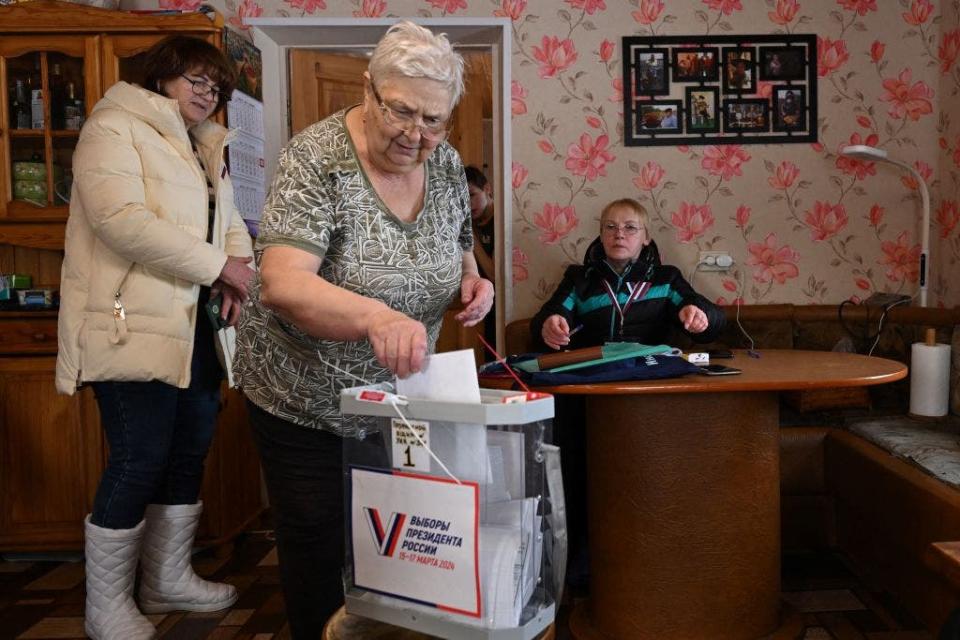
Inside a bare apartment littered with concrete blocks and slabs of plywood, construction site manager Serhiy Yerokhin points to a large balcony overlooking the treetops of Irpin, a suburb outside of Kyiv occupied and heavily damaged during the first month of Russia’s full-scale invasion.
Almost two years ago, a missile tore through the roof of the apartment building, destroying the balcony and most of the apartment’s interior.
But now, the sounds of drills and hammers can be heard as the building approaches its completion date in three months. Yerokhin and his team began building last June in one of the first projects registered in Ukraine’s Digital Restoration EcoSystem for Accountable Management (DREAM).
DREAM is a large collaborative effort from state bodies such as Ukraine’s Reconstruction Agency, the local and international NGO collective RISE, and international partners including the U.K., which has been the major backer.
At its core, DREAM is an online database for every type of reconstruction project across the country. Anyone can scroll through the website and track the progress of projects as well as access all data to see where the money is coming from and going.
In addition to providing open data for law enforcement and NGOs to keep an eye on corruption, it’s also a centralized platform for businesses and investors to find the tens of thousands of reconstruction projects spread throughout Ukraine.
With an estimated over $410 billion in damages, rebuilding Ukraine will be a massive task. As reconstruction projects take place simultaneously all over the country, DREAM is the government’s response to collate all the data in one place.
Still in its early days, it remains to be seen if DREAM will work in Ukraine’s convoluted reconstruction landscape.
“DREAM is the tool to properly manage projects, and make everything transparent and accountable to basically every citizen,” Viktor Nestulya, head of the DREAM Project Office, told the Kyiv Independent.
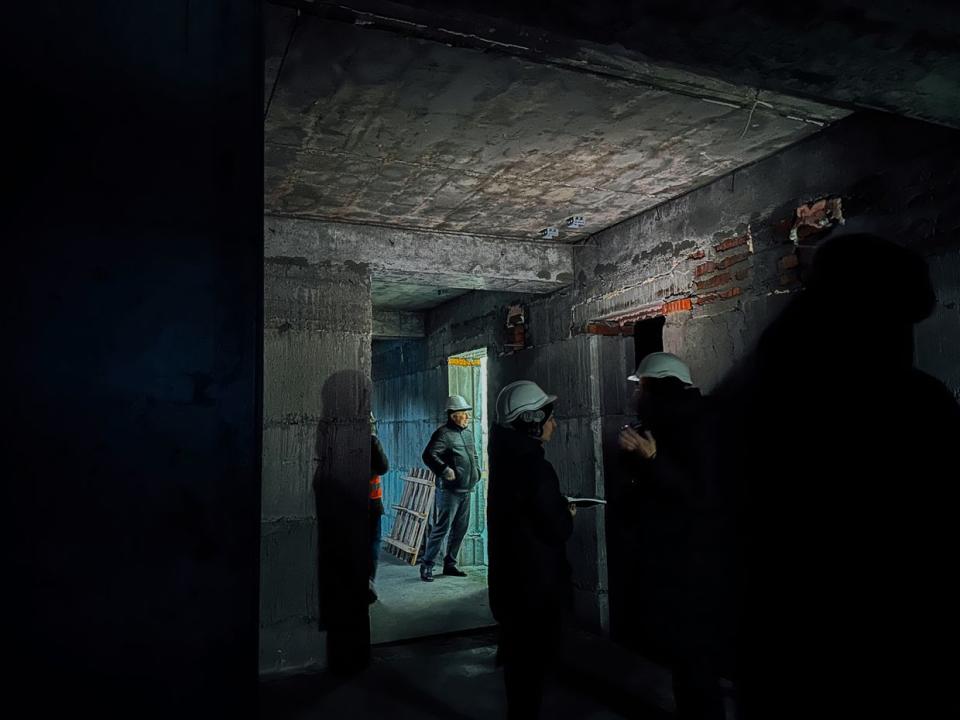

Officially announced at the Ukraine Recovery Conference in London last June, the team says it was met with some skepticism. Conference attendees said it looked “nice” but they weren’t sure Ukraine could follow through on its promise.
Several months on, few investors that the Kyiv Independent spoke to had heard of DREAM. The team is still confident that it can become the go-to tool for much-needed foreign capital.
The ambitious platform still needs some work. The team is aware that the website is complicated for average citizens, packed with technical jargon about procurement, tenders, and legal documents.
But they see few other options for Ukraine’s massive reconstruction process which is likely to take years. The team implements weekly updates to improve the system and plans to include more transparency tools over time. Nestuyla said that this year will see major developments such as a more user-friendly interface for citizens.
Read also: Reconstruction in Kyiv suburb sabotaged by local officials, discouraging foreign investors
Over 500 communities have voluntarily registered to the website in the pilot stage, although not all of them have uploaded projects yet as they work on gathering the necessary information.The team at DREAM says the platform will become mandatory for public reconstruction projects this spring to ensure total transparency.
Nestulya acknowledges that Ukraine cannot oblige international partners to use DREAM. Some international organizations, like the Nordic Environment Finance Corporation (NEFCO), are following their own procurement procedures for reconstruction projects.
The initial projects relied on funding divided between the Fund for the Liquidation of Consequences of Armed Aggression (seized Russian assets) and money from the European Investment Bank. To access the total Hr 21.6 billion ($573 million), communities first had to fill in their data to DREAM.
As of now, the data shows that there are 773 projects funded by the Ukrainian budget on the national and local level totaling Hr 32 billion ($852 million), and 219 projects funded by international investors totaling Hr 11 billion ($293 million).
The team acknowledge that lack of funding for reconstruction is an issue but are optimistic that this will change at the end of the war when DREAM will be needed the most.
The start of DREAM
DREAM was born out of necessity. After the liberation of territories in spring 2022, the world saw the immense level of damage Russia inflicted on occupied Ukrainian towns.
“It was obvious that we needed something open and digital to understand what was going on,” Deputy Minister for Communities, Territories, and Infrastructure Development Oleksandra Azarkhina told the Kyiv Independent.
“The restoration process is super decentralized. It’s happening on all levels: central, regional, local. There are thousands of recipients and also thousands of donors.”
The U.K. and Germany’s development agency GIZ initially funded the platform. USAID/U.K. Development Digital Transformation Activity are the latest backers to join last month. So far, financial supporters have invested $900,000 into the DREAM’s IT system.
For now, the system is not aimed at everyday citizens. Instead, it is meant for heads of local governments, such as mayors, who assess what needs to be repaired, reconstructed, or modernized in their communities.
They can add the project to DREAM and include information such as the description, project design, budget breakdown, project plan, contracting processes, payments, as well as photos of the site.
Investors from the private or public sector are then able to find potential projects to support on the public portal by applying filters to narrow down the location, budget, stage of implementation, and sector.
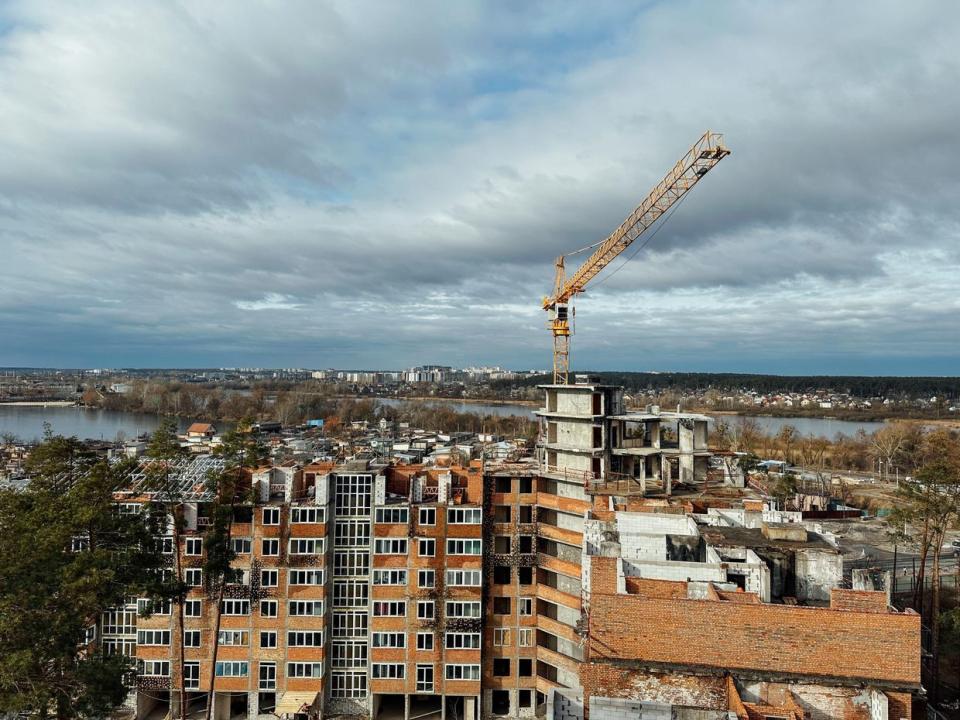
Currently, 1,801 projects are logged in the system with Kyiv, Kharkiv, and Chernihiv Oblasts leading the way. The majority, 1,270, are focused on reconstruction from war damage while 532 are for other projects, such as accommodation for displaced people.
So far, transport and logistics are the most popular sectors, with Hr 14.3 billion ($381 million) going into these projects. Education is next at Hr 10.8 billion ($288 million), followed by housing at Hr 7.15 billion ($191 million), healthcare at Hr 5.27 billion ($141 million), and water and sanitation- Hr. 3.45 billion ($92 million).
The Kyiv School of Economics (KSE) said that as of Sept. 1, 2023, 344 bridges and overpasses, and over 25,000 kilometers of state and local highways and communal roads had been damaged since the start of the full-scale war.
Read also: ‘We can’t wait for peace:’ Reluctant at first, Denmark takes on rebuilding war-torn Mykolaiv Oblast
KSE also said that 167,200 homes, 426 large and medium-sized private enterprises and state-owned companies, 3,500 thousand schools, and 384 hospitals had been damaged or destroyed.
The website is integrated with nine government IT services including the state construction system and ProZorro, the public procurement service introduced in 2016 to ensure transparency in state construction projects.
Companies click on a DREAM project which will direct them to the project’s page on ProZorro. They can then see which tenders are available and participate in bidding via ProZorro.
Azarkhina points out that the money is not distributed through DREAM. “We are the platform to provide data and information,” she emphasizes.
Battling corruption
Enforcing transparency doesn’t mean that DREAM is an anti-corruption tool. Rather, it tracks and openly displays the whole reconstruction process, which in theory allows journalists, citizens, and anti-corruption organizations to spot any dubious activity.
“In DREAM, we will show everything and strengthen planning and implementation procedures. But there is no magic pill that will cure corruption,” Nestulya explained.
The team is eager for communities to engage with the platform democratically. Citizens can keep a close eye on the projects to ensure that promises are being met and upload photos to the website.
If a site pledges to be accessible for people with disabilities, for example, then residents can check that this criteria is being met. If not, they will be able to file a complaint via the DREAM system under its partner project Big Recovery Portal, another platform for monitoring the recovery process.
Nestulya explains that DREAM will be integrated with the Diia application, a digital portal where Ukrainian citizens can access government services. Residents will then also be able to vote on projects using Diia.


While the e-democracy tools are still in development, citizens currently can object to developments during public hearings where proposals are discussed.
“It is up to a community to decide on how to invest their own money. Here we want to empower citizens with timely access to (local government) plans so they can respond properly,” Nestulya said.
Not everyone is convinced. Kateryna Zvereva, head of the NGO “I want to learn!,” has been monitoring reconstruction projects in her hometown Zaporizhzhia.
“Any ordinary citizen can leave a comment about sites if it does not correspond to reality. But it remains unclear who should respond to these comments and take action,” she told the Kyiv Independent.
Zvereva supports the integration of Diia and public voting into DREAM to allow residents to make autonomous decisions without pressure from officials. She also explains that since the platform is currently optional, many contractors are not interested in using DREAM.
“Without legislative regulation, it will not work. And that’s also why the residents are really not aware of DREAM’s existence.”
Raising awareness
Currently, the team is traveling across Ukraine and explaining the process in meetings with regional administrations, local community associations, civil society organizations, and regional media.
In Kirovohrad Oblast in central Ukraine, the Regional State Administration told the Kyiv Independent that it communicates with the DREAM team every two weeks.
The administration and community representatives share advice and knowledge on a Telegram channel for the 94 current projects in the region.
But there is still much to do on the platform before ordinary citizens can use it. Nestulya mentions that additional information such as environmental assessments will be added as well as a user-friendly interface accessible for everyone.
This year, the team will invest $850,000 into improving the system, part of which will go towards developing an interactive map similar to the ones used by Ukrainian real estate companies.
“Whatever is under construction, needs funding, or is already completed will be marked. And you will be able to use filters and search for something or just click on the site to see all the details,” Nestulya said.
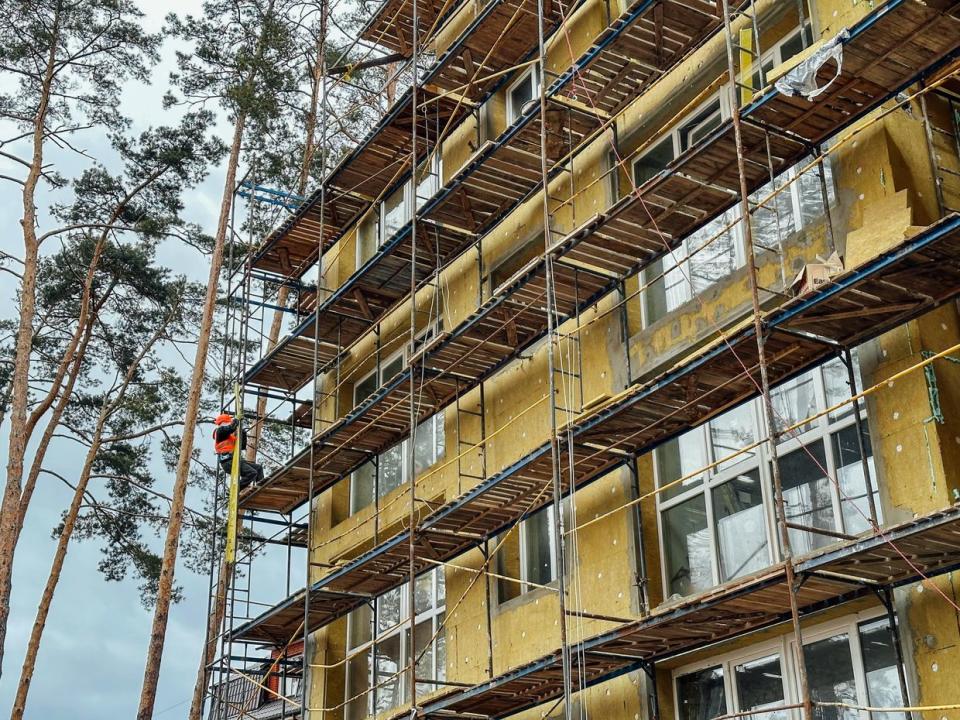
Building trust
The formerly occupied town of Irpin has been an active participant in DREAM and praised the platform. The Irpin administration told the Kyiv Independent that it is important that donors, including international ones, use the system.
The town worked with Lithuania to renovate a kindergarten over eight months last year. The project was the first fully completed state-financed project under DREAM.
Currently, only a handful of countries are financing projects through DREAM. Of the six active nations, most have just invested a small sum in one or two projects.
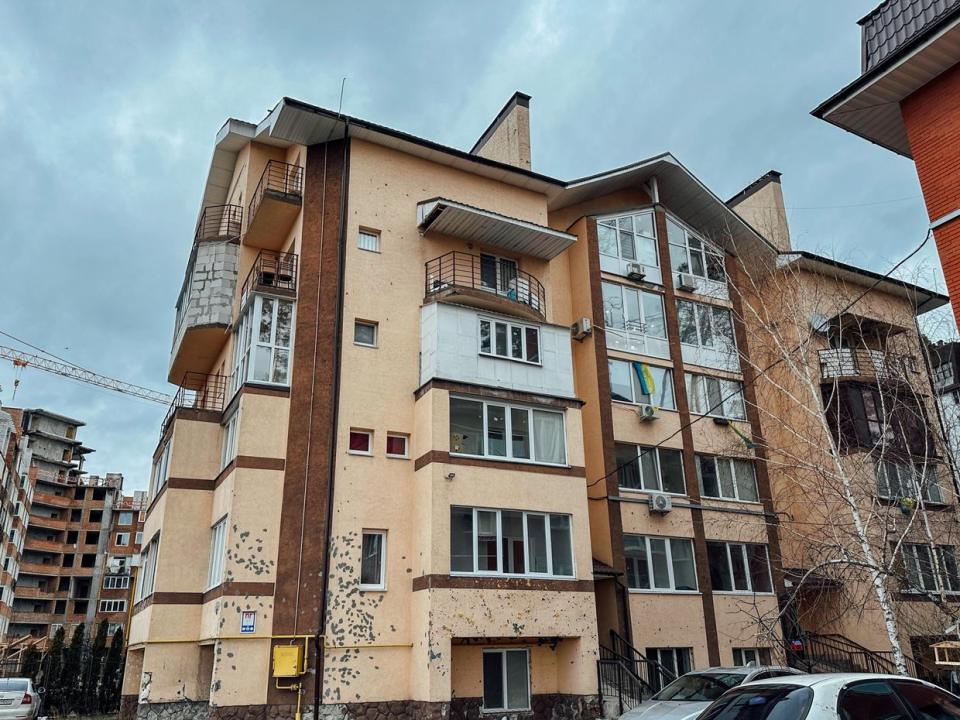
“DREAM will only deliver on its promise if it is actually used,” Mante Makauskaite, chief advisor on reconstruction of Ukraine at the office of the government of Lithuania told the Kyiv Independent.
“If Ukrainian institutions and civil society organizations are serious about making DREAM work, so should we as their partners.”
Nevertheless, the team is making small steps towards building trust, including cooperation with the European Commission to validate that the system meets the EU’s IT standards and security protocols.
For Azarkhina, the DREAM pilot itself is evidence that Ukraine is taking its corruption concerns seriously. Without it, she believes it would be harder to attract the much needed financial support.
“When the security situation is better and the investment climate is better and the scale will be higher, the need for DREAM will be bigger.”
Read also: Everyone talks about investing in Ukraine, but few are doing it
We’ve been working hard to bring you independent, locally-sourced news from Ukraine. Consider supporting the Kyiv Independent.
EMEA Tribune is not involved in this news article, it is taken from our partners and or from the News Agencies. Copyright and Credit go to the News Agencies, email [email protected] Follow our WhatsApp verified Channel






